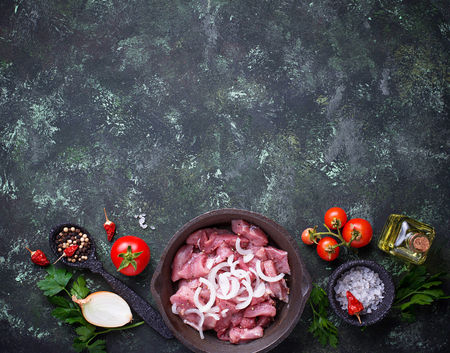Introduction to Alternative Proteins in Pet Food
Walk into any pet store in the U.S. these days and you’ll spot a growing variety of pet foods lining the shelves—grain-free, raw, organic, and now, formulas boasting “alternative proteins.” As American pet parents become more conscious about what goes into their furry friends’ bowls, there’s a noticeable shift happening: people are starting to look beyond traditional chicken, beef, or fish as protein sources for their pets. This change is fueled by rising concerns about sustainability, food allergies, and the environmental pawprint of conventional animal agriculture. With multi-pet households on the rise and a greater emphasis on treating pets like family members, curiosity about insect-based and lab-grown meats is buzzing louder than ever. Whether you’re raising a pack of dogs on a country homestead or sharing your cozy city apartment with a couple of cats, understanding these new protein trends can help you make thoughtful choices for your beloved companions—and maybe even spark some interesting dinner table conversations with fellow pet lovers.
2. Insect-Based Protein: Buzzing Into the Market
As American pet parents become more conscious of what goes into their furry friends’ bowls, insect-based proteins are making quite a buzz in the pet food world. From crunchy cricket flour to black soldier fly larvae, this alternative protein source is capturing attention for its nutritional punch, eco-friendly production, and unique flavor profile—though it does take some getting used to for both pets and their humans.
Nutritional Benefits: Tiny Creatures, Big Impact
Insects are surprisingly rich in essential nutrients. They offer high-quality protein, healthy fats, vitamins, and minerals—often rivaling or even exceeding traditional meat sources like chicken or beef. Here’s a quick comparison:
| Protein Source | Protein (%) | Fat (%) | Key Nutrients |
|---|---|---|---|
| Cricket Flour | 65-70% | 10-15% | Iron, B12, Omega-3 |
| Poultry Meal | 60-65% | 12-18% | Zinc, B6, Phosphorus |
| Black Soldier Fly Larvae | 40-45% | 30-35% | Calcium, Magnesium |
Packed with amino acids and beneficial micronutrients, insect-based recipes can support everything from shiny coats to strong muscles—important for dogs chasing frisbees or cats leaping for sunbeams on the windowsill.
Sustainability: Green Treats for a Greener Planet
If you’re looking for ways to lower your household’s environmental “pawprint,” insect-based foods shine bright. Farming insects requires less land, water, and energy than raising cattle or poultry. Plus, they emit fewer greenhouse gases and can thrive on food waste—turning scraps into superfood. For eco-minded families with gardens full of veggies and chickens in the backyard, choosing bug-based kibble feels like a natural extension of sustainable living.
Cultural Acceptance: Creepy-Crawly or Cool Cuisine?
The biggest hurdle? Getting over the “ick” factor. While eating bugs is common in many cultures around the world, it’s still new territory for most Americans. Yet, with growing awareness about sustainability and some clever marketing (hello, “eco-friendly protein bites” instead of “bug chow”), attitudes are slowly shifting. Pet owners who’ve made the leap often say their dogs and cats take to insect-based foods with enthusiasm—sometimes even preferring them over traditional options!
Common Concerns from American Pet Owners
- Is it safe? – Yes! Insect-based pet foods are regulated and tested for safety just like other commercial products.
- Will my pet like the taste? – Many report positive feedback from even picky eaters.
- Is it hypoallergenic? – Insects can be a great option for pets with common meat allergies.
- What about cost? – While currently pricier than mainstream kibble, prices may drop as production scales up.
For families invested in sustainability and curious about new ways to nourish their beloved companions—from senior pups lounging on farmhouse porches to rescue kitties curled up by the fire—insect-based proteins represent an intriguing frontier in pet nutrition worth exploring.
![]()
3. Lab-Grown Meat: Science in the Food Bowl
If you’ve ever wondered what the future of pet food might look like, lab-grown or cultivated meat is one of the most exciting—and sometimes controversial—developments in recent years. Unlike traditional meat that comes from farm-raised animals, cultivated meat is produced by growing animal cells in a controlled environment, resulting in real meat without the need for slaughter. This innovative process begins with a small sample of animal cells, which are then nurtured in nutrient-rich bioreactors. Over time, these cells multiply and form muscle tissue, eventually becoming a protein source that looks, tastes, and nourishes just like conventional meat.
Safety is always top-of-mind for pet parents, especially those of us who see our dogs and cats as family members. The good news? Early studies show that cultivated meat can be just as safe as traditional meat, if not safer. Because it’s grown in sterile conditions, there’s less risk of contamination from bacteria like Salmonella or E. coli. Plus, producers have more control over what goes into the final product—no antibiotics or growth hormones needed!
Environmental impact is another big reason why many Americans are keeping an eye on lab-grown options. Traditional livestock farming uses a ton of land and water and produces significant greenhouse gases. Cultivated meat, on the other hand, uses far fewer resources and generates less waste—meaning your pup’s dinner could help protect the rolling fields and fresh air we all love so much.
Of course, when it comes to feeding our beloved pets something new, U.S. pet owners have mixed feelings. Some folks are excited about the science and sustainability behind cultivated proteins; others worry about how “natural” this food really is for their four-legged friends. As more companies roll out pilot products and research continues to grow, American pet lovers are watching closely—always eager to find that balance between health, tradition, and caring for our beautiful planet.
4. Comparing Nutrition and Palatability
When it comes to choosing what’s best for our furry family members, both nutrition and taste matter just as much as sustainability. Let’s break down how insect-based proteins and lab-grown meats stack up in pet food, from the nutritional profiles to whether our pets actually enjoy eating them. Both veterinarians and devoted pet parents have weighed in, so let’s dig into their perspectives.
Nutritional Value at a Glance
| Protein Source | Key Nutrients | Digestibility | Allergen Risk |
|---|---|---|---|
| Insect-Based Protein (e.g., black soldier fly larvae) | High protein, healthy fats (like lauric acid), calcium, iron, B12 | Easily digestible for most pets; fiber-rich exoskeleton supports gut health | Low (great for pets with common meat allergies) |
| Lab-Grown Meat (cultured chicken or beef) | Complete amino acid profile, customizable fat content, micronutrients based on cell culture medium | Comparable to conventional meat; precise control over composition can improve digestibility | Potentially lower than traditional meat, but research is ongoing |
Taste and Acceptance: Will Pets Eat It?
Palatability is crucial: No matter how nutritious a food is, picky eaters won’t benefit if they turn up their noses! In real-world trials and feedback from American pet parents:
- Insect-based kibble: Many dogs and cats accept it well, especially when flavors are enhanced with broths or natural aromas. Texture can be crunchy—a win for chewers!
- Lab-grown meat: Early testers say it’s almost indistinguishable from conventional meat in texture and flavor. But because it’s new, some pets may take time to adjust.
Veterinarians Weigh In
According to U.S. veterinary nutritionists, both alternative proteins show promise for balanced diets—especially for pets with sensitivities or allergies. They note that insect protein offers valuable omega fatty acids and minerals while lab-grown options can be tailored for specific dietary needs (like low-fat or high-protein).
Pet Parent Perspectives
Many pet owners love the idea of eco-friendly, allergy-friendly foods—especially if their dog has itchy skin or their cat turns up her nose at chicken. Most agree: as long as their pets thrive and enjoy mealtime, they’re open to these new protein sources.
5. Sustainability and Ethical Considerations
For pet lovers who cherish the rolling fields, bustling city parks, and every critter under the sun, sustainability isnt just a buzzword—its a way of life. Across America, more and more pet parents are taking a closer look at what goes into their furry (or feathered) friends bowls, especially as concerns grow about our planets future. Traditional meat production takes a heavy toll on land, water, and energy resources; its also one of the largest contributors to greenhouse gas emissions. Thats why alternative proteins like insect-based or lab-grown meats have started to catch the attention of eco-conscious pet owners from California’s green valleys to Vermont’s cozy farmsteads.
Insect protein, for example, uses far less water and land than beef or chicken farming. Black soldier fly larvae can thrive on food waste, turning leftovers into high-quality nutrition without straining the earths resources. Lab-grown meats, cultivated from animal cells in controlled environments, promise similar benefits by reducing the need for large-scale animal farming and potentially eliminating the ethical concerns tied to conventional meat production. For those of us who love every animal on the homestead—from our loyal pups to wandering barn cats—this could mean feeding our pets without contributing to the suffering of others.
Sustainability-minded pet owners are also thinking about long-term impacts. Choosing alternative proteins could help reduce pollution, conserve precious farmland, and protect wildlife habitats. While these new protein sources may sound futuristic, they’re rooted in a growing desire to make choices that are both kind to our pets and gentle on the earth. Whether you’re raising chickens in your backyard or strolling through a dog-friendly neighborhood park, it’s no wonder American pet parents are keeping a close eye on these innovative options for their beloved companions.
6. Barriers to Mainstream Adoption
Despite the promise of insect-based and lab-grown proteins in pet food, there are notable barriers preventing these alternatives from becoming mainstream in the United States. Understanding these challenges is key for anyone curious about what’s actually in their dog’s or cat’s bowl—and why the next big thing hasn’t hit every pet store shelf just yet.
Regulatory Hurdles
One significant roadblock is regulatory approval. In the U.S., organizations like the FDA and AAFCO (Association of American Feed Control Officials) have strict guidelines for what can be labeled as “pet food.” While some insect proteins have begun to pass through these hoops, lab-grown meats face even more scrutiny. The novelty of these ingredients means lengthy safety studies and compliance checks, slowing down mass adoption.
Consumer Hesitancy
Let’s face it: Americans love their pets like family, and when it comes to feeding them, there’s a certain comfort in sticking with traditional proteins like chicken, beef, or salmon. Many pet parents balk at the idea of giving Fido a cricket kibble or cultured meat treat. Concerns range from perceived “ick” factors to worries about nutrition and digestibility. Changing hearts and minds—especially in communities used to home-cooked meals or premium kibble—takes time and trust.
Marketing Challenges
Convincing consumers isn’t just about science; it’s also about storytelling. Brands must walk a fine line between educating shoppers on sustainability benefits and not alienating them with unfamiliar concepts. Packaging, branding, and even the words used on labels play a big role. For example, calling something “insect protein” might not go over as well as highlighting its eco-friendly benefits or hypoallergenic properties. Marketers are still figuring out how to position these products so that they appeal not just to early adopters but also to everyday pet owners picking up food at their local Tractor Supply Co. or neighborhood Petco.
Looking Forward
The journey toward mainstream acceptance of alternative proteins in pet food is paved with both opportunity and obstacles. Regulatory clarity, consumer education, and creative marketing will all need to work hand-in-hand if insect-based and lab-grown options are ever going to become the new norm in American households—whether you’re raising city cats or country dogs with a whole flock of chickens for company.
7. The Future of Pet Food: What’s Next?
As we look ahead, the landscape of pet nutrition is on the cusp of transformative change. Alternative proteins—whether insect-based or lab-grown—are not just trends; theyre becoming genuine contenders for the next generation of pet foods. From rustic American homesteads where sustainability is a lifestyle, to bustling city apartments where space and eco-consciousness intersect, these innovations promise to reshape how we nourish our furry friends.
Imagine a future where bags of dog kibble or cans of cat pâté highlight cricket flour or cultured chicken as their star ingredients. This shift could mean fewer environmental footprints, less strain on farmland, and healthier pets thriving on nutritionally complete diets that reflect both modern science and mindful stewardship. For those raising goats and chickens alongside their dogs and cats, alternative proteins may become an extension of their farm-to-bowl ethos—especially if they can source local insect farms or partner with regional biotech startups.
Suburban families might appreciate the convenience and allergy-friendly potential of novel proteins, while city dwellers could embrace them as part of a broader movement toward sustainable living. As more research emerges about the digestibility and palatability of these ingredients, pet parents will have greater confidence in making choices that align with their values and their pets’ needs.
The journey isn’t without challenges—regulatory approval, consumer acceptance, and price points all play crucial roles. But just as backyard chickens became mainstream for fresh eggs and garden veggies for home-cooked meals, alternative proteins may soon be as familiar as a walk in the park with your pup or a sunny windowsill nap for your cat.
Ultimately, the future of pet food looks to be one where our love for animals meets innovation and responsibility. Whether you’re tending a small flock under wide country skies or sharing a high-rise with your rescue tabby, alternative proteins could help ensure every meal supports both our pets wellbeing and the planet we all call home.


